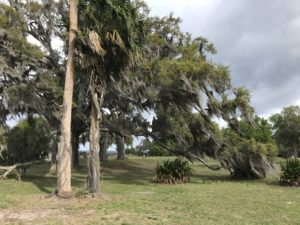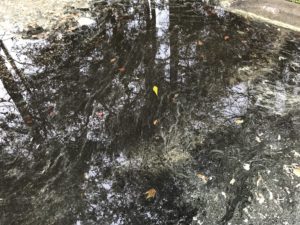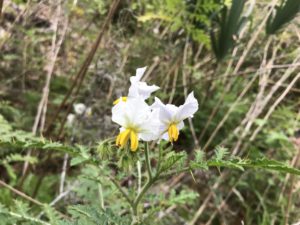March and April were pollen season in Coastal Georgia. I used to think spring allergies in Ohio were bad. And they were, compared to the relatively pollen free air in winter in Ohio. But, when we came to coastal Georgia in winter, I discovered a whole new level of pollen saturation.

Here on St. Simon’s Island, the biggest sources of pollen are the Southern Live Oaks. Those gorgeous trees draped with Spanish Moss are the embodiment of the deep south for many people. They are also major producers of pollen. Because they are so large and spread out, they produce a lot of pollen during their two week pollen season. After a rain in March, you can see a layer of yellow on top of every puddle. The pollen coats the RV and all the buildings.

Now, you might think that you could just rinse off the pollen after it settles. You would be wrong. The pollen forms a sticky paste that adheres to things like glue. The only way to get it off is to scrub it. Tom and I washed the truck last week, at the end of pollen season. Tom power washed it and scrubbed it with a brush. Then I scrubbed it again with another brush and dish soap. After a rinse, we wiped it clean with rags. We can still see a few spots of pollen on the hard-to-reach places on the truck, but it looks pretty good.

Southern Live Oak isn’t the only thing that sheds pollen in the late winter / early spring around here. We had azaleas blooming, grass growing, weeds sprouting, and deciduous trees blooming. Fortunately, most of the pollen is done now – at least until the ragweed starts blooming. I’m hoping to be out of here before then!
Despite the allergies, the pollen, and the biting bugs, this is still a beautiful place to be. Tom and I feel blessed that we are able to self-isolate here with the beach, the marsh, and Fort Frederica.
